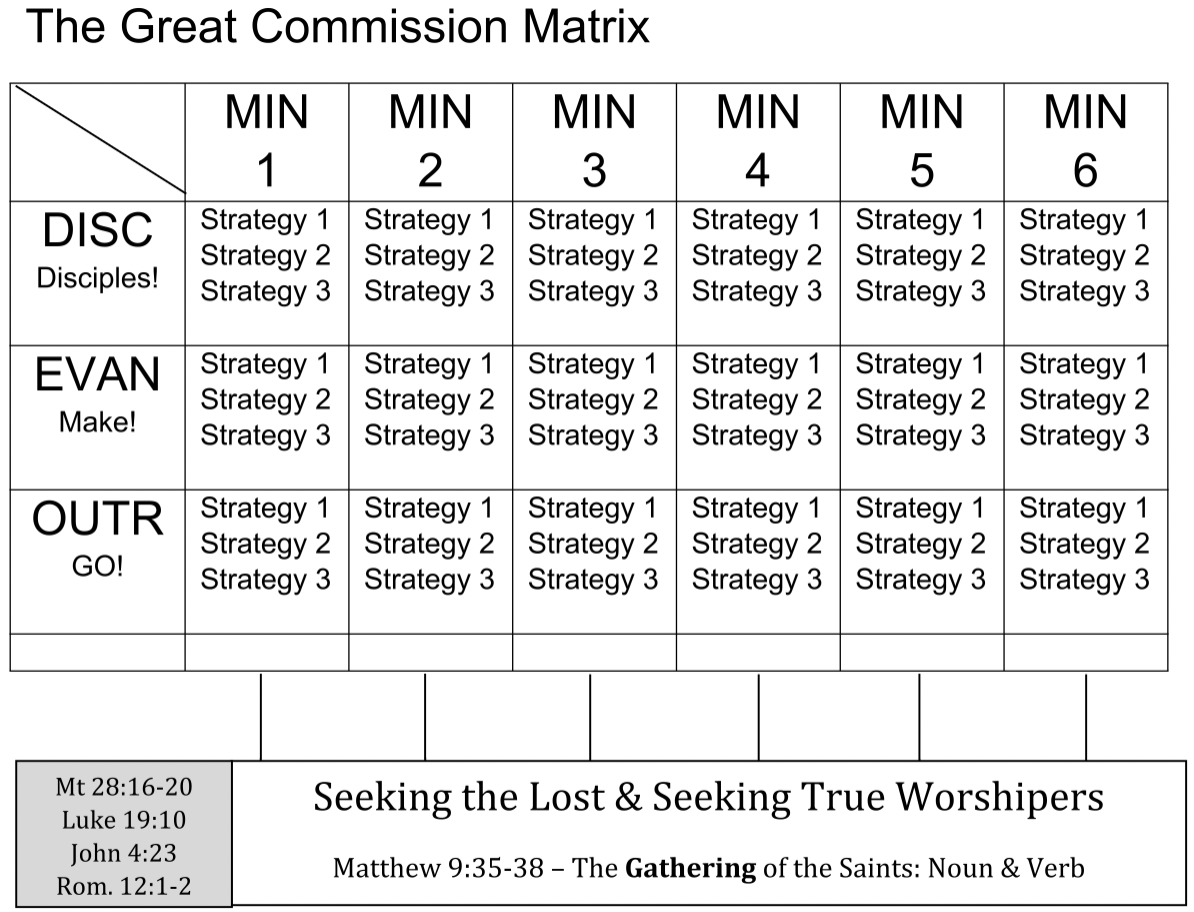Reading: 5.5—Role Clarity
5.5 Role Clarity: Focusing outward on reaching a community with the Gospel creates a ministry environment that is often not as neat and tidy as that of an inward facing, program-driven church. It’s helpful to have roles among staff and leaders clearly defined with regular evaluations and accountability. Previously, we mentioned that a program focus to ministry often leads to the development of ministry silos where each ministry stays bounded within itself without a sense of its context in the larger picture of a church’s ministry. As such, the roles of leaders might be clear, but only in terms of operating inward ministries that serve a congregation independently of other ministries. Though that might qualify as a type of role clarity, it’s role clarity that is misplaced. Our concern is role clarity within the context of Great Commission ministry.
While it’s true that staff and leaders will have their unique areas of responsibility, each staffer or leader will also have a role or responsibility to the vision and mission at large, the common Great Commission mission that threads through every ministry of the church. This can be accomplished through the application of strategic ministry through the Great Commission Matrix. The backdrop to the Great Commission Matrix is a shift in ministry perspective. The conventional approach to ministry asks the question, “How do we minister TO the congregation?” The Great Commission Matrix approach to ministry asks the question, “How do we minister THROUGH the congregation to reach a community with the Gospel?” The shift from TO to THROUGH is a dramatic shift with huge implications for role clarity. Consider the following diagram:

I have fully unpacked the Great Commission Matrix in other documents such as Simply Vital: A Jumpstart to Basic-Yet-Complete Church Revitalization, so I’m not going to go into a full explanation of the matrix here. Rather, I’ll unpack as much as necessary to speak to role clarity.
Note that the matrix is formed by connecting a vertical axis with a horizontal axis. The horizontal axis contains a series of columns that represent the various ministry areas or program areas of the church. The vertical axis displays three rows that contain three missional ministry movements in the church. A movement is distinct from a ministry area or program in that it’s a thread that weaves through every ministry area of the church and is not simply one more entry on a list or menu of ministries or programs.
From the bottom up, the three are Outreach, Evangelism, and Discipleship. Outreach and Evangelism are not synonymous, though in some ministry circles they are treated as such. The GO Center makes a clear distinction between the two. Outreach is when people from inside the church connect with people outside the church to form sustainable relationships. The objective of Outreach is sustainable relationships. Evangelism is when people who are outside of the Christian faith are connected with a clear explanation of the Gospel. Many times, the opportunity to engage with Evangelism grows out of relationships built through Outreach, so they are very much related, but they are two distinctly different elements. Discipleship is the spiritual development of people who have come to faith through Evangelism. Obviously, Outreach, Evangelism, and Discipleship are closely related and, according to the Great Commission Matrix, are to be engaged in every ministry area of the church. Every ministry area develops the capacity to implement Outreach, Evangelism, and Discipleship and, consequently, every ministry area moves out from the church to minister in the harvest.
This unique perspective speaks strongly into role clarity of staff and leaders. Each staffer or leader, regardless of his or her unique assignment within a particular ministry area, will be active in Outreach, Evangelism, and Discipleship. That common action, that grows out of a common Great Commission vision and mission, impacts how staff and leader roles are defined. For example, a staffer or leader who serves in the area of, say, youth ministry, will, of course, concentrate his or her leadership on youth ministry, but that leadership will mobilize through the movements of Outreach, Evangelism, and Discipleship within the context of youth ministry. The big idea of the Great Commission Matrix is that ALL ministries will similarly mobilize.
Another of my resources that speaks to role clarity is the Leadership Ladder: Developing Missional Leaders in the Church. This resource, co-authored with Dr. Steven Ogne, is complemented by a workbook and is organized by two rails and six rungs of a ladder as follows:
Rail 1: Building Biblical Knowledge
Rail 2: Building Biblical Character
Rung 1: Living Missionally
Rung 2: Making Disciples
Rung 3: Mobilizing Ministry
Rung 4: Leading Ministry
Rung 5: Leading Leaders
Rung 6: Planting Churches
The church that clarifies staff and leader roles in accordance with Great Commission vision, mission, values, strategies, and structures, and that leverages such Great Commission tools such as the Great Commission Matrix and the Leadership Ladder, positions itself well for effectiveness in the harvest. This effectiveness is made sustainable through the use of regular evaluation and accountability. Church ministry often fails in this regard, not keeping a regular finger on the pulse of missional ministry and not holding staff and leaders accountable for faithfulness to role design and its prescribed objectives. Infusing regular evaluation and holding staff and leaders accountable for staying on course will support and solidify Great Commission effectiveness.
Working with staff and leaders effectively demands role clarity combined with regular evaluation and accountability to ensure that Great Commission focus is maintained.
